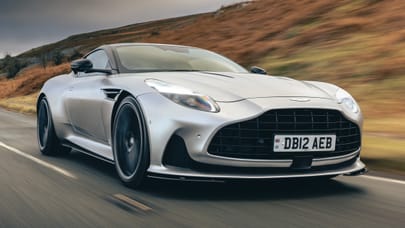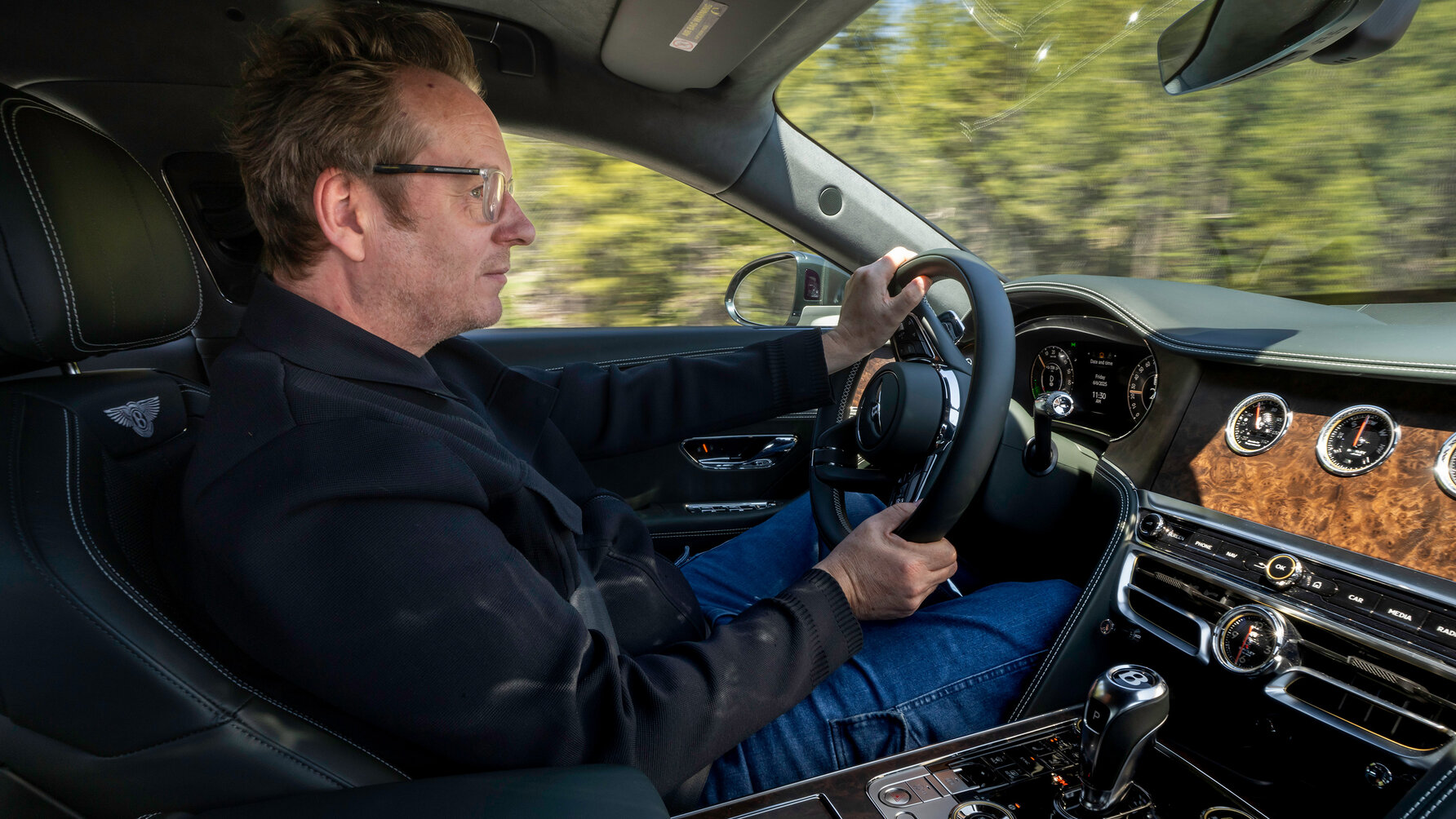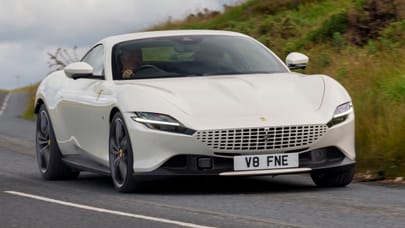
Good stuff
Sheer dynamic capability and balance, hybrid is well integrated, the true definition of a luxury GT
Bad stuff
It’s more expensive and now very heavy indeed, don’t believe the CO2 claims for a second
Overview
What is it?
The world’s best grand tourer. Now more dynamic than ever before. We’ve heard this a lot over the years. Ever since Bentley first gave lux-hungry buyers a Continental GT back in 2004, and a couple of years later the convertible GTC variant, it’s been making it more sporting. The comfort stuff it has always done brilliantly, but the original, with its enormous 6.0-litre twin turbo W12 mounted atop the front wheels, was a nose-heavy motor.
Over the years it was sharpened, but there’s only so much you can do with a burly two-tonne 4WD coupe. The all new car that came along in 2018 had a more rakish profile and the handling to match, but despite Bentley’s best efforts was still a bit blunt and heavy when pushed.
What’s happened now?
The W12 has gone and batteries have arrived.
And this has made things better has it?
There’s a lot to unpack here, but overall yes. Let’s start with the bad stuff though. The most handling-focused version of the previous Conti GT was the 650bhp W12 Speed. It arrived in 2021 with the ability to send more power to the rear wheels for full-on smoky drifts. It still weighed 2,273kg. This new one is almost 200kg heavier.
Because batteries. It’s now a plug-in hybrid, the W12 replaced in the nose by a lighter twin turbo V8, while the batteries are in the rear to balance out the weight distribution seesaw. Which is now 49:51. That’s right, there’s more weight over the rear wheels than there is over the fronts.
Actually, we say V8 has replaced W12, but a V8 has long been available as the ‘entry-level’ Conti GT. This is no entry-level model. In fact it’s the most powerful Bentley road car there’s ever been, with 584bhp from the internal combustion augmented by a 187bhp e-motor sitting between engine (actually an all new V8) and eight-speed twin clutch gearbox. So 771bhp in total, and a torque peak at a nice round 1,000Nm, which is 738lb ft in our money. And even with that having to push against 2,459kg, this car can hit 62mph from a standing start in 3.2 seconds. Or 3.4s for the convertible GTC, all 2,636kg of it.
Ah, it’s essentially a rocket-powered throne then?
That’s one way of putting it. Another would be to point out that this is a very, very sophisticated car now. Underneath it has four-wheel steering, twin chamber dampers (new for this generation), active anti-roll, an electronic diff and torque vectoring. These chassis upgrades are where the money has been spent.
So it’s still basically the same car underneath?
Correct, after six years on sale this is essentially a good midlife facelift. Extensive enough that 68 per cent of parts are new, including an entirely overhauled electric architecture and aircon system. This amount of work under the skin means less money was available to make it look different. The body panels are carried over, but the front and rear ends are new.
You’ll have spotted the headlights because – shock, horror – the new Conti doesn’t have twin lamps either side for the first time ever. Instead a slash of eyelash adds identity to the single lamps. This isn't only highly distinctive, it also makes the car look wider and lower to our eyes.
Tell me more about the hybrid. Is this the same as the Bentayga’s?
No, thank goodness. The Bentayga hybrid uses a six cylinder engine with a more modest battery that can’t recharge itself on the move. This is much more comprehensive and the 25.9kWh battery (22.0kWh usable) means a 50-mile claimed range. Still no fast charging, so you’re looking at a best of 11kW (2.45hrs on a home charger), but Bentley has realised what we all guessed: e-charging isn’t a luxurious experience, so no-one bothers doing it anywhere other than home.
The hybrid does allow them to claim this 2.5-tonne coupe emits 29g/km of CO2. Poppycock.
Anything else in the pipeline?
Indeed. The top Speed models are known as Ultra Performance Hybrids, and they’ve just been joined by the merely High Performance Hybrid incarnations. Such is the way of things, the lesser V8 makes do with 671bhp and 686lb ft. This engine is available across all body styles in a choice of new Core and Azure variants. The latter, says Bentley, emphasises ‘wellness and comfort’.
That said, these new ‘lesser’ hybrids are still juicy enough to outperform the old W12 version in all the key parameters, whilst being able to travel a claimed 53 miles in electric mode (the GTC is slightly less efficient, and can do 51 miles in e-mode). Technically, this is the ‘base’ car, but it sure doesn’t feel like it.

The Azure version has some visual alterations. For example, there’s more ‘crystal’ detailing in the headlights, and the rear lights get a red lens treatment with a welcome animation compared to the Speed’s smoked effect. The matrix grille and rear diffuser are finished in gloss black. Of course, this being Bentley, owners are encouraged to take a lengthy – and lucrative – wander through the options list.
Incidentally, good pub fact for you: sometime early next year Bentley expects to build its 100,000th Conti GT.
What rivals does it have?
In terms of long distance comfort, there’s no other two-door to touch this one. Aston’s DB12 is a fine machine, but with its more confined cockpit and busier manners it’s not as relaxing as this. And nor is any other supposed GT, all of which from the Maserati GranTurismo and Ferrari Roma (soon to be updated) to Porsche’s 911 Turbo make great play of their sporting prowess, much less of their refinement.
But is the Conti as good to drive as them?
Hmm. No. This is the best handling Conti GT there’s ever been. It disguises its weight brilliantly and flows around tight corners in a way that shouldn’t be possible for anything on the top side of two tonnes. It’s a wonderfully flattering and satisfying car to drive, with ultra-secure traction. But it’s not thrilling in the same way those rivals are. They are more connected, responsive, agile and raucous than the Bentley.
But these new dampers don’t half improve matters. And not in the way you think. In Sport mode they’re not much stiffer than before, but in Comfort they’re quite a bit softer, which results in this pillowy, downy ride that is perhaps our single favourite aspect to the way the new Conti drives. We’ve also now experienced the less powerful version, and despite giving away 100bhp, it feels scarcely any less urgent or engrossing. More on all this in the Driving tab.
What about the convertible?
The GTC doesn't have this dual character. There's a little body flex, which softens the initial steering response. That tremor through the shell becomes emphasised when you put the suspension in sport mode. So you don't. You leave it in the softer mode where it's at one with itself.
Also, the brake discs are steel rather than the giant carbonfibre plates in the GT, so the pedal has a softness at the top of its travel. Again, helps you to be smooth, but not ideal for pants-on-fire driving.
It's a gentler tourer, the GTC, despite having the same phenomenal overtaking power as the GT. You drive it more at ease, enjoying the breeze, the V8 woofle, or through quiet streets the absolute silence of electric drive. The less powerful version is gentler still, although there’s still enough fire in its belly for any sane Bentley owner.
What's the verdict?
This is a car that understands its role better than almost any other. In that regard, nothing has changed, it just now performs that role better than it ever has before. The V8 hybrid powertrain suits the Conti GT very well indeed and the driving experience has blossomed – yes, it’s faster, but it’s the smoothness of response and sheer capability here that are the stand out features.
Since the Speed’s role hasn’t changed (and in essence, neither have the looks) we can’t see the Conti GT bringing in many new customers who weren’t previously persuaded. The arrival of the less powerful iterations and a shift in focus towards ‘wellness’ – that’s a buzzy term – broadens the appeal.
Whichever version you’re talking about, the move to hybrid and low tailpipe emissions enhances the car’s bandwidth. If potential owners do, say, 100 miles a day and plug in at home overnight, their visits to stinky petrol stations will be halved.
The diehards might bemoan the departure of the W12. That would be a mistake as this hybrid V8 is a superior powerplant in every way. And this car is now better than it’s ever been.
The Rivals
Trending this week
- Gaming
Geek, rebooted











